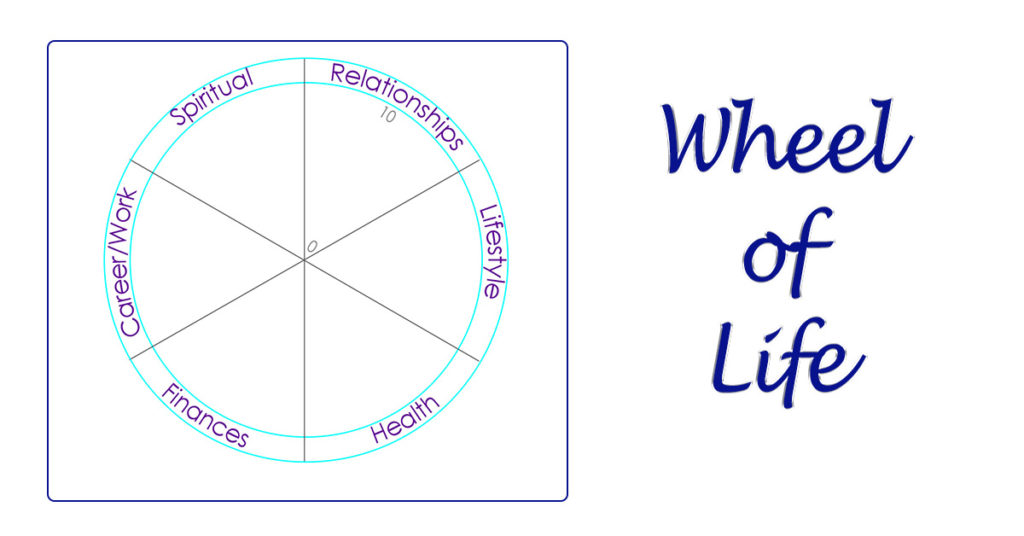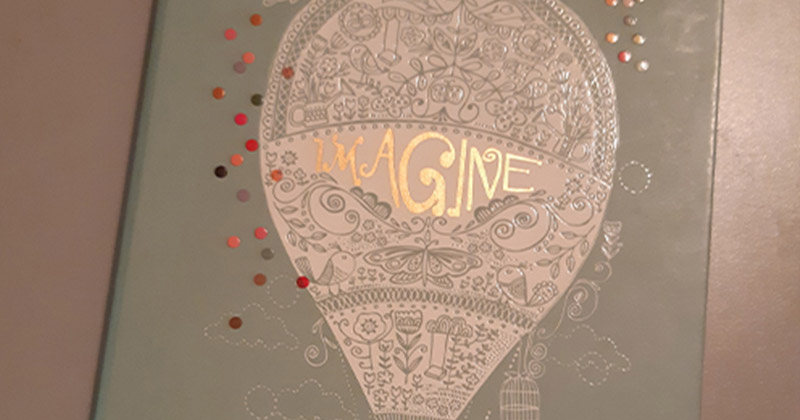In the coaching world there’s a common assessment tool called The Wheel of Life. It’s a visual tool to measure how satisfied you are in different areas of your life. As a coach, I get my clients to complete the wheel on their own and then at our next meeting, we review it together to discover what may be lacking and what is abundant in their life.

We don’t always work directly on the life area with a lower number if the client is wanting to see change in other areas, but knowing how they feel about the different areas of their life provides me with a clearer picture of how change can happen for them. This will also allow me to ask better questions to help them grow in any area of their life.
There are many different reasons that The Wheel of Life assessment is beneficial to use. I like it for my coaching relationships and I recommend it to anyone looking to make positive change in their life. Getting an objective overview of where you feel your life is at now provides you a starting point to get clear on where you really want to see change.
Identify What is Important to You
It’s important to take a step back and reflect on what matters most to you. Ask yourself questions such as, “What are my long-term goals?”, “What do I want out of life?” and “What is it that I need to make sure I’m taking care of for myself?” Write your thoughts down or talk about them with someone who can provide support. This will give you a better understanding of how to prioritize the different areas in your life when you can talk out loud and be prompted to get a bit deeper with your true desires.
Set Goals in Each of Your Life Areas
By starting with a simple life assessment method you can then move on to creating your story by keeping a book where you write down what you’d like to see in the main areas of your life.

Writing Your Story
See this post for more info on creating your Dreaming and Planning Book - includes a video where I share my experience creating and maintaining mine.
This book can be called a Vision Book, Goal Setting Book, or my favourite, a Dreaming and Planning Book. And there are very few ‘rules’ on how to create your Dreaming and Planning Book. It should be as unique as you, but if you’d like a bit of starting advice, then here’s some basic ideas you can follow:
- Section your book with the headings for the 6 main areas listed below. Use the wording that most resonates with you and you can have more or less headings – whatever sections sound like a right fit for you to focus on. You can, and likely will, change the headings and layout in the future. Here are the example headings:
-
- Spiritual
- Lifestyle (hobbies, homelife, learning)
- Relationships
- Health
- Finances
- Career/work
-
- Have a section at the beginning, or anywhere in your book, to jot down inspiring words you read, hear, think or say. This will be great to review regularly and to turn to when you’re feeling uninspired, frustrated or confused about life.
- Write down your story in any way that feels right. Here are a few different ways you can go about it:
-
- State random ideas of what you’d like to see in each area
- Write down goals for each area
- Split each section into short-term and long-term goals and dreams
- Break each section down into actionable to-do’s
-
- Regularly review and add to or adjust what you’ve written. If you don’t keep your vision in front of you regularly then you will have a much harder time achieving it. Not only will you get more clear on what it is you really want for your life, you’ll get your brain in the habit of coming up with new ideas and stretching yourself to go for bigger and brighter dreams
Prioritize What’s Most Important And Focus on Those Tasks First
When it comes to balancing all the areas of your life, prioritizing your tasks is essential. Create a daily to-do list and sort tasks by importance. Start with the most urgent and important ones first, as these are likely to require greater effort and lead to higher rewards. It’s important to devote time and energy into the things that really matter, such as career objectives and maintaining meaningful relationships with your loved ones. Celebrate small successes along the way and use them as motivation for future goals.
Don’t get overwhelmed with looking at every part of your life and trying to make lots of change at once. Make little changes consistently to see lasting change that aligns with who you really are. Maybe just doing the Wheel of Life assessment is all you need to focus on right now. Measure your satisfaction in those different areas and then just review that every day. Jot down questions and ideas that come up from contemplating those wheel sections.
Eventually get deeper by creating your version of a Dreaming and Planning book so you can discover that purposeful vision for your life that God has set inside of you. With daily attention put towards what is meaningful to you, you’ll connect to that divine wisdom that will guide you to the greater abundant life we’re all meant to live.
Written by Steph Morrison
 Steph has been building businesses, mostly from home, for over 10 years, motivated by her strong determination that her two youngest boys would be educated at home. Pursuing her calling to help parents enjoy the responsibility of educating their children, she works in the marketing department of The Old Schoolhouse®, and coaches and trains entrepreneurs to start and grow their business from home. Her and her family are perfectly placed in the prairies of Saskatchewan, Canada. She loves being a homebody and building up her permaculture property. Learn more about Steph at the About Steph page.
Steph has been building businesses, mostly from home, for over 10 years, motivated by her strong determination that her two youngest boys would be educated at home. Pursuing her calling to help parents enjoy the responsibility of educating their children, she works in the marketing department of The Old Schoolhouse®, and coaches and trains entrepreneurs to start and grow their business from home. Her and her family are perfectly placed in the prairies of Saskatchewan, Canada. She loves being a homebody and building up her permaculture property. Learn more about Steph at the About Steph page.


